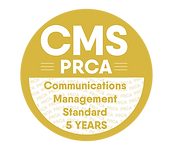e-petitions: a step towards more accessible, transparent campaigning
31 October 2017 - by Claire FlynnAs the Assembly's e-petition service awaits approval, similar platforms continue to promote public engagement.
Earlier this year, a petition calling for Donald Trump to be banned from entering the UK secured 1,276,628 signatures. The appeal was met with a simple “OK, but no” from a Downing Street spokesperson.
There have been multiple campaigns on various platforms including Change.org, the world’s largest e-petitioning website. Petitions integrated into the political process are more likely to grab the attention, or earn the trust, of decision makers than independent sites. That said, there exists some debate about whether public petitioning should be in the hands of government at all. It is, after all, government that decides on what is debated, as well as owning the information that it gathers from users.
Parliamentary petitions have never truly succeeded in implementing real change, in spite of the top 10 most-shared campaigns from petition.parliament.uk in 2016 gathering millions of signatures and producing hundreds of thousands of shares. Not one succeeded in obtaining its intended outcome. Many of these petitions exceeded the necessary threshold without being tabled for debate.
Some would suggest that this outcome feeds into the idea of slacktivism: that people can’t really provoke social change. However, e-petitions serve to raise awareness, inspire change and act as powerful messages about the will of the people.
Also challenging is the fact that when people are motivated by an issue they want it dealt with quickly though it is unclear how swiftly their concerns will be debated once the petition has reached its threshold. This is mirrored more generally in the policy process, which isn’t always straightforward and can involve a number of factors, from campaigning to knowing when to add pressure at the right time.
As experts in the field, Stratagem provides training and advises clients on a range of campaigning tools and methods, be it the more traditional means of letter writing and poster campaigns or the mobilisation of grassroots support through online activism, podcasts and blogs.
Stratagem developed its own online campaigning tool, the iCampaigner, in response to a need of local organisations. Different from, but complimentary to, an e-petition system, the iCampaigner enables supporters to engage with elected representatives, not only through emailing but also sharing through social media. Communication between the client organisation and those signed up is also possible. It also allows for less homogenous messages to be sent, understanding how personal stories resonate more with elected representatives*.
We know that the Assembly intends to establish an e-petition system. This will be a welcome addition for individual activists and organisations who wish to develop campaigns addressing specific issues.
While political mechanisms are in place already, such as No Day Named Motions, Assembly Questions and Private Members’ Bills, having one’s issues discussed as a result of a public petition is a way to place your issue on the official record and hear parties debate it. There is also an opportunity to submit evidence in advance – key to developing the success of a campaign.
What remains to be seen is whether such a facility will lead to politics being brought closer to the public, fostering greater accountability in the Assembly and Executive’s decision making.
*The Northern Ireland Commissioner for Children and Young People launched a campaign on child poverty. Check out its campaign at https://icampaigner.org/join/childpovertyni








